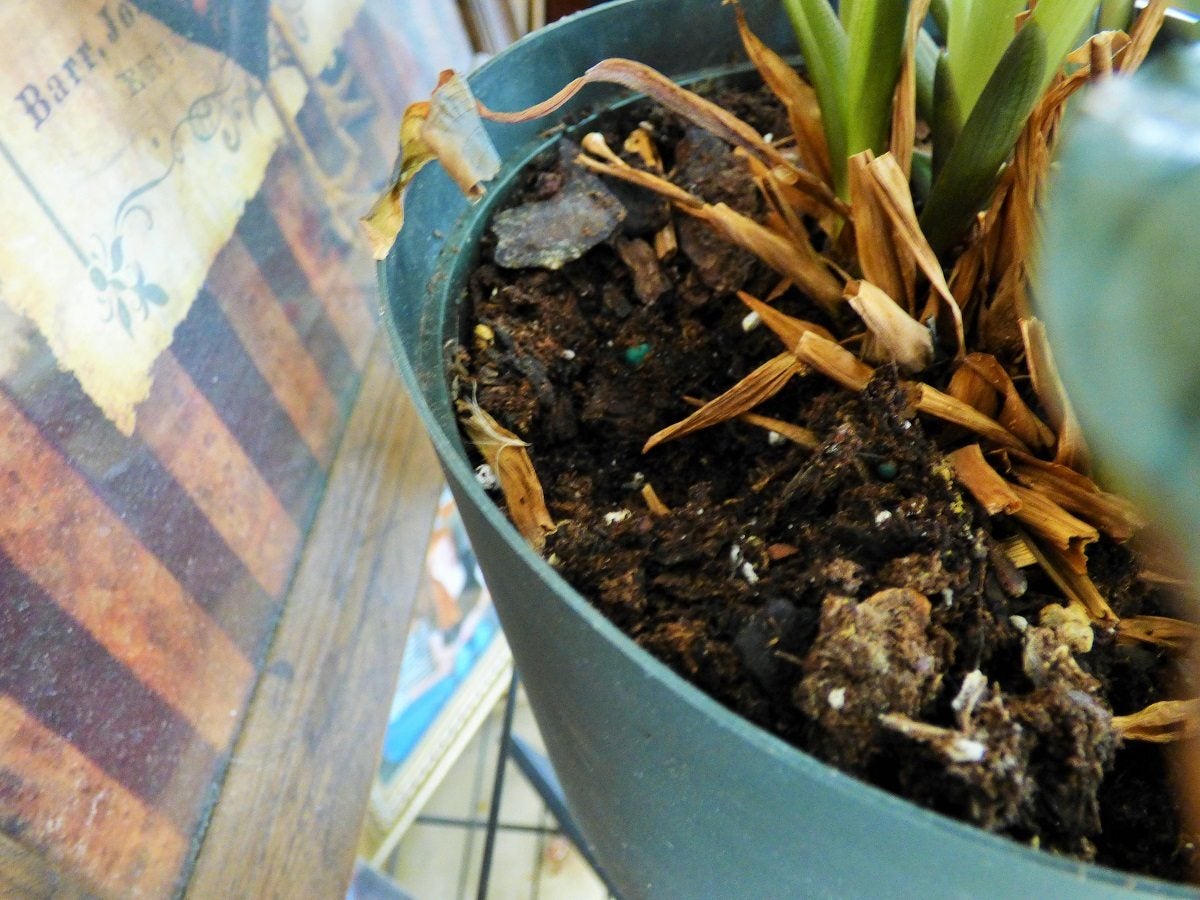Holes In Potted Plants: Why Are Mice Digging Up Houseplants


Finding a series of holes dug into your houseplants can be frustrating, but holes in potted plants aren't uncommon, especially in the fall and winter. As the weather gets cooler, rodents often seek shelter indoors. Even though they don't necessarily eat houseplants, rodents often see the loose potting soil as a great place for storing bits of found food and can cause a lot of damage.
Rodents in Houseplants
Any time you've got mice digging up houseplants, you've got a problem that reaches far beyond just your indoor greenery. Your first and foremost goals should be to eliminate the mouse doing the digging and preventing more mice from doing the same.
A house cat allowed to roam freely at night is one of the best control methods for mice, but if you don't have a cat or Fluffy is laying down on the job, snap traps are almost as effective. While you're hunting the mouse, you'll also need to be looking for his secret passage into your home.
Check small, tight spaces that lead directly to the outdoors, like areas where plumbing or ventilation enter the home, large cracks at wall and floor joints, or dark corners of cabinets where a mouse could have chewed through the wall. Stuff any holes you find full of steel wool to prevent new mice from entering your home. The reason your houseplant keeps getting dug up is because the mouse in question is using it to store food, so make sure you're cutting off that supply, as well.
If he's eating the dog's food, store the bag in an airtight container and feed Fido regular meals, removing any leftovers after he's had a chance to eat. Mice that are eating human food scraps should be dealt with in the same way -- seal your cereal, flours, and any other easy-to-access foods away from the rodent's sticky fingers.
Burrows in Outdoor Pots
Sometimes, gardeners will complain of fairly large holes appearing in their outdoor pots early in the morning. If you happen to live near a water source, this phenomenon is probably caused by young toads.
As tadpoles mature into the adult toads that anyone would recognize, they go through a number of growth stages. Their last stage is often carried out in moist, loose soil -- much like what's in your outdoor planters.
Gardening tips, videos, info and more delivered right to your inbox!
Sign up for the Gardening Know How newsletter today and receive a free copy of our e-book "How to Grow Delicious Tomatoes".
Toads in pots only need a few days to fully mature, and when they do, they leave a big hole behind. You can discourage toads by covering your planter's soil with gravel or simply cutting back on the watering. After all, the dry soil won't support their further development, so it's no cause for interest.

Kristi Waterworth was a regular contributor to Gardening Know How for many years, answering countless queries on plant pests and diseases.
-
 8 Perfect Flowers To Plant With Tomatoes To Boost Yields & Banish Pests
8 Perfect Flowers To Plant With Tomatoes To Boost Yields & Banish PestsDon’t forget flowers when choosing companion plants for your tomato beds or pots. These pretty, fragrant blooms add beauty but are also highly beneficial.
By Mary Ellen Ellis
-
 Want The Longest Lasting Hydrangea Flowers? Grow These 8 Panicle Hydrangea Varieties
Want The Longest Lasting Hydrangea Flowers? Grow These 8 Panicle Hydrangea VarietiesFor ornamental shrubs that deliver the longest flowering seasons with plush blooms and delicate hues, these panicle hydrangea varieties are essential in your yard
By Tonya Barnett
-
 8 Easy Care Houseplants That Live A Long Time
8 Easy Care Houseplants That Live A Long TimeClick here to learn about our 8 favorite low maintenance houseplants that can, with proper care, live a long time.
By Amy Grant
-
 How Often Should You Repot Plants?
How Often Should You Repot Plants?Escaping roots and shrinking leaves may mean your plant wants a new pot, but some like staying cramped and cozy.
By Mary Ellen Ellis
-
 Orange Flowering Houseplant Varieties With Tropical Flair
Orange Flowering Houseplant Varieties With Tropical FlairClick here to learn about some cheerful orange-blooming houseplants you can try growing.
By Mary Ellen Ellis
-
 Variegated Houseplants With Lovely Leaves
Variegated Houseplants With Lovely LeavesWhat are some of the best variegated houseplants to add to your collection? Click here to find out.
By Amy Grant
-
 Lovely, Lacy Indoor Foliage Plants
Lovely, Lacy Indoor Foliage PlantsClick here to learn about some houseplants with lacy foliage to add to your collection.
By Mary Ellen Ellis
-
 Best Christmas Houseplants And Plants For Winter Holidays
Best Christmas Houseplants And Plants For Winter HolidaysClick here for an idea of the best houseplants to use for holiday décor for Christmas, Hanukkah, Kwanzaa, and New Year’s.
By Laura Miller
-
 Best Big Houseplants To Create An Indoor Oasis
Best Big Houseplants To Create An Indoor OasisIf you have the space you may want to grow some large houseplants. Here are some ideas.
By Mary Ellen Ellis
-
 Relaxing Plants To Grow Indoors For A Calmer Mind
Relaxing Plants To Grow Indoors For A Calmer MindAre there houseplants that can help you to relax? Click here to find out.
By Laura Miller